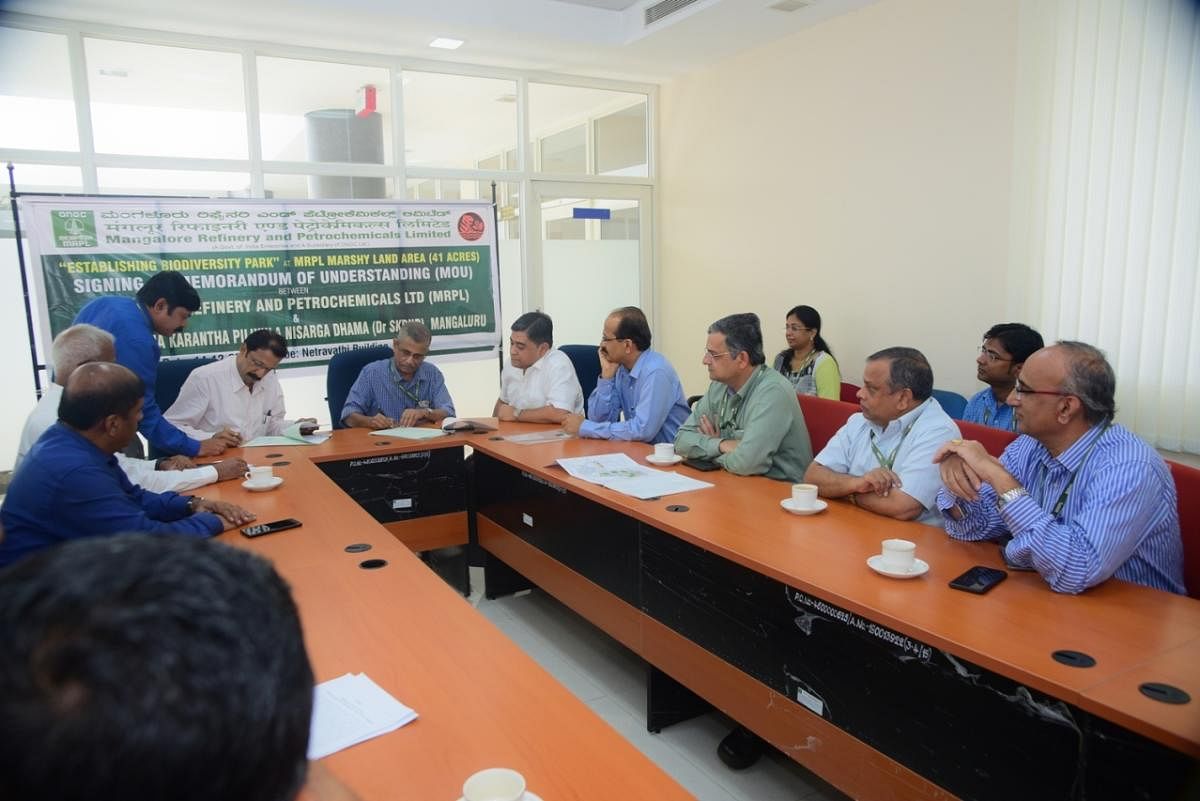
Mangalore Refinery and Petrochemicals Limited (MRPL) entered into a memorandum of understanding (MoU) with Dr Shivarama Karanth Pilikula Nisargadhama, Pilikula for development of biodiversity park.
The MoU is valid for a period of 5 years. M Vinayakumar, GGM (I/C Refinery, TS and MO) signed the MoU on behalf of MRPL and Prasanna, Executive Director represented Shivarama Karanth Pilikula Nisargadhama in the presence of senior officials from MRPL, Shivarama Karanth Pilikula Nisargadhama and KSPCB.
The total project cost is Rs 12 crore.
Vinayakumar said the MRPL, since its inception, is blessed with the presence of lush foliage in and around the refinery which fosters a variety of flora and fauna species.
"Over the years MRPL has taken several strides towards development and maintenance of the greenbelt. Now, the MRPL is in the process of establishing a multi-ecosystem diodiversity park, at Pilikula. The proposed park is envisaged in the 41 acre marshy area forming the southernmost part of MRPL’s green belt," he said.
The proposed development will be achieved through an ex-situ conservation process (conservation of genetic resources in natural populations of plant or animal species, such as forest genetic resources in natural populations of Teagan species) wherein plants from different areas of Western Ghats and coastal Karnataka will be collected and planted in the park, he said.
The increased density and species of plants will in-turn attract different forms of animals, birds and other species, thus augmenting the bio-diversity of the region. Since the living organisms have a gestation period to the new habitat, it is estimated that a time period of about five years will be needed for the proposed land to develop into a full-fledged biodiversity park, he added.
"The Park is also intended to sensitise people and industrial counterparts about the biodiversity and adopting ex-situ conservation methods," he said.